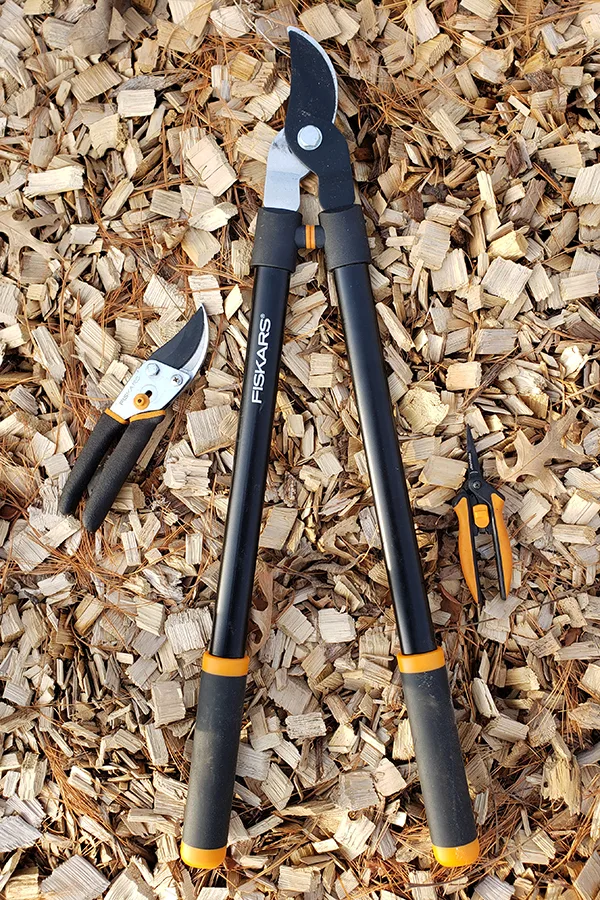While late winter is usually a time for planning and dreaming about the upcoming gardening season, it’s also the perfect time for pruning most varieties of rose bushes. And can pruning ever make a difference in getting your roses to bloom bigger than ever this year!
Pruning is vital for keeping most rose varieties healthy and in check. Not only can it improve the overall appeal of the bush, it also helps to improve air circulation, reduce the chances of disease, and encourage new growth and blooms.
During late winter and early spring, most rose bushes are dormant, which makes it an ideal time for pruning. As a dormant plant, there is little worry about exposing the bush to harsh, winter damage. But even more, you don’t have to worry about the bush producing new growth – which is why winter pruning is far better than performing the chore in the fall.
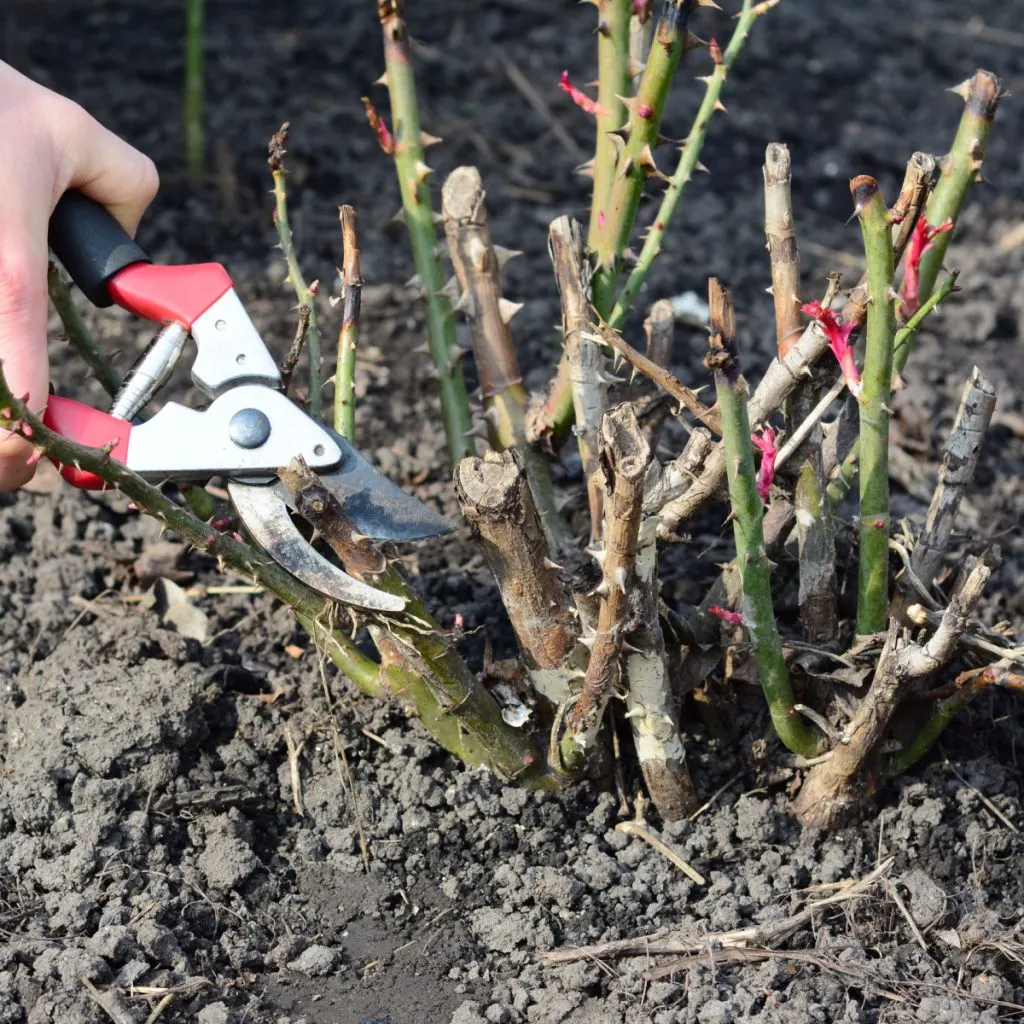
If you prune in the fall, you risk the plant trying to grow new shoots if the weather stays warm too long. Unfortunately, late growth is tender growth. And those tender branches then become susceptible to damage from winter elements. It can damage the new shoots – and the overall health of the bush.
Another advantage of late winter pruning is that most rose bushes have dropped almost all of their leaves, which makes it much easier to see for pruning!
As you will see below, some rose bush varieties can be pruned heavily in the winter, while other types should only have simple shaping and dead wood removal. Here is a look at how to prune all of your rose bushes just right – and to have your best blooms ever this year!
Pruning Rose Bushes In Winter
What You’ll Need To Prune
There are a few items you will need to have on hand before you begin pruning your rose bushes. First and foremost, you will need a good pair of thick gloves and long sleeves. In the winter, that’s not usually an issue!
Most rose bushes have prickly thorns all over their stems. Not only can these thorns cause painful scratches on hands, arms and legs, but the thorns can also transmit infections on some rare occasions. So it’s always safer to err on the side of caution. Affiliate Product Link: Handlandy Rose Pruning Gloves
You will also need a pair of hand pruners and/or loppers for thicker branches and stems. Always make sure your blades are sharp. Dull blades make poor cuts and can lead to issues for the bush later on. Affiliate Product Link: Fiskars Rugg Heirloom Carbon Steel Bypass Lopper/Pruner Set
It’s also important to clean your blades between each plant by wiping the blades down with rubbing alcohol. This will help keep disease from easily spreading from plant to plant.
Keeping Roses Vibrant – Pruning Rose Bushes In Winter
While proper watering and fertilizing helps to keep rose bushes thriving during the summer months, routine pruning is equally important for roses retaining their vitality. Not only for the overall appearance of the plant but also their general health and blooming cycles. (See, “Summer Rose Care – How To Deadhead And Fertilize Roses“)
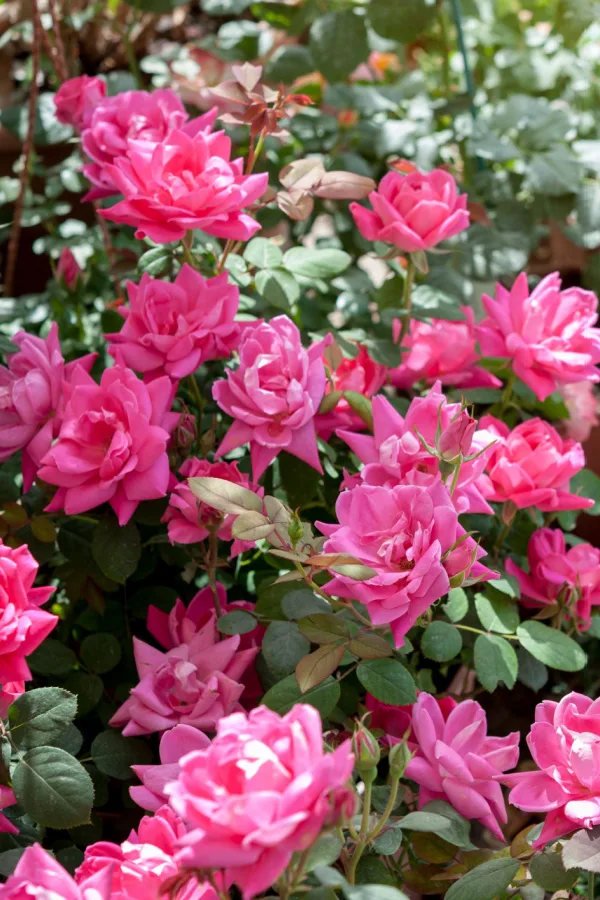
Knowing how and when to prune the various rose bush varieties is vital to their blooming success. Some rose varieties bloom on new wood while others bloom on old, mature wood. There are also a few roses that bloom only for one time period, while others bloom continually all season long.
Improperly pruning can have a huge impact on the number of flowers that are produced the following spring and summer. If your rose bushes are unfamiliar to you and you aren’t sure of their variety, observe them for an entire growing season. This will help you get an idea of how they bloom before pruning.
Now let’s take a look at the most common types of rose varieties – and how to prune each type in the winter!
Pruning Rose Bushes In The Winter For Success – Handling Different Types Of Roses
Hybrid Tea & Grandiflora Roses
Hybrid tea, floribunda, and grandiflora roses bloom multiple times throughout the growing period. They produce buds on new wood (i.e., the current season’s growth) and do well with heavy pruning.
These types of roses are great for pruning in late winter or very early spring before any new growth has begun for the season. Hybrid roses are best pruned back about a foot off the ground. This encourages the main stems to grow strong and healthy.

First, clear out any dead or damaged stems. Also, remove any branches that are crossing paths and might be rubbing against one another when the wind blows. When branches are too close, they damage one another quite easily.
Pruning For A “V’ Shape – How To Prune Roses Bushes In The Winter
Next, step back and take a look at the overall shape of the hybrid rose bush. Decide on how you want it to look and cut the stems accordingly. You can remove up to 40% of the old wood, removing the central stems. The goal is to create an overall “V” shape with several canes growing from the ground.
This helps to open up the middle of the plant, improving air circulation and allowing light and pollinators to get to all areas of the plant. As with any rose bush variety, always begin by removing dead or diseased branches.
If any limbs are broken or damaged, also remove these. Next, cut off any branches that are crossing or growing inward. Cut branches back to about a quarter of an inch above an outward-facing bud. Keep the cut at around a 45º angle. This encourages growth to happen outward as opposed to inward toward the middle of the plant.
In addition to damaged canes, remove any that are smaller than the width of a pencil. Also, cut off any suckers that might grow below the graft or pop up out of the ground next to the main canes. You can cut these branches completely to the ground – or where they attach to the main canes.
Roses That Bloom Continually – Pruning Rose Bushes
Rose varieties that bloom multiple times a year include Knock Out roses and Climbing roses. Climbing roses bloom on mature wood. Because of this, don’t prune these varieties the first couple of years after planting.
If needed, only remove damaged or dead branches during the late winter or early spring season. Anything beyond this and you risk pruning off future blooms. After about three to four years, you can prune any unwanted canes back or train them to the desired shape.
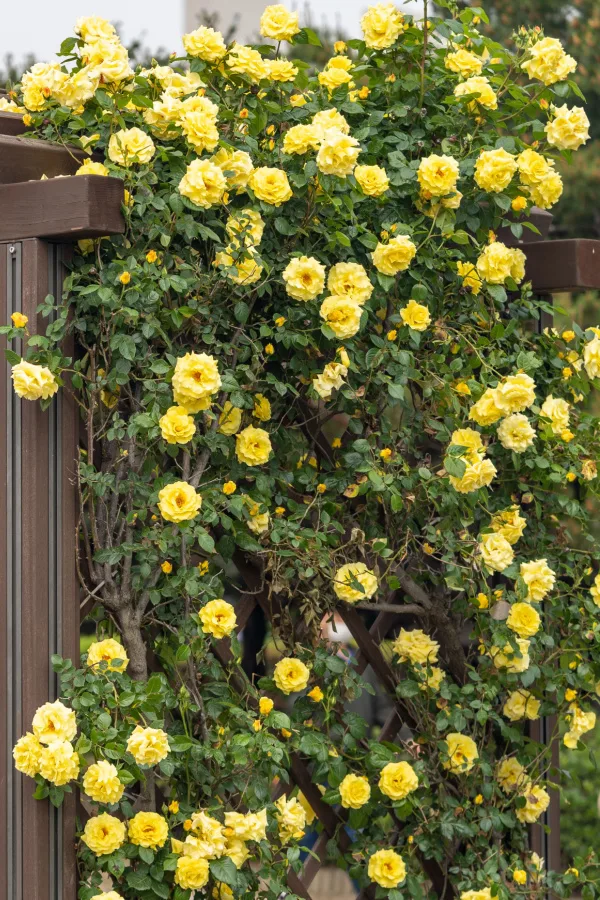
Climbing roses have both central and side branches. Pruning the side branches will help encourage heavy blooming. Save any intense pruning until after they are done blooming at the end of summer as opposed to winter or early spring.
Shrub rose bushes like Knock Out roses bloom on new growth. They also shouldn’t be pruned their first couple of years. Starting in late winter or early spring, remove any old or broken canes first. Cut these branches back completely to the base. If desired, the entire plant can be pruned back to a third of its size.
Old Roses and Once-Blooming Modern Shrubs
Old roses and shrubs that only flower once typically bloom on old wood. In late winter or early spring, cut out any broken or dead branches. Also, remove any that show signs of disease. For these bushes, that is all you need to do in late winter. Any more winter pruning, and you risk eliminating future blooms.
Immediately after flowering, you can then prune them heavily. This pruning is to simply keep the shape and form of the shrub. These types of roses will rebound quickly with new growth the following season.
Rose Hips – Pruning Rose Bushes In The Winter
If you live in colder climates, roses are naturally triggered to go into dormancy because of the weather. However, for those in warmer climates, the plants could use a little help indicating that the winter season is on the way.
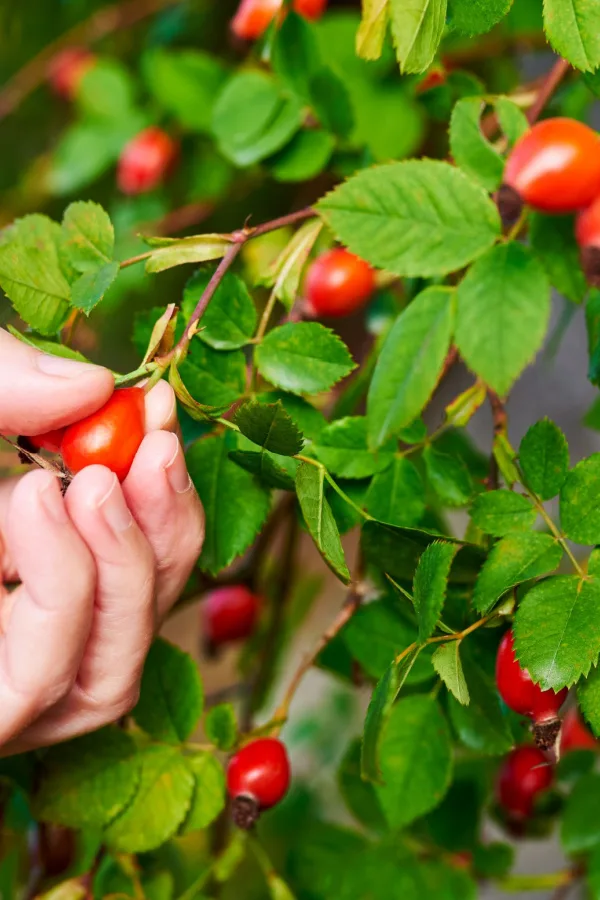
For rose bushes in warmer locations, leave rose hips on the plants. The rose hips are “fruit” that some rose plants produce. Leaving them will help to trigger the plants that it is time for dormancy. This is important since cool weather may not arrive as an indicator.
Here is to pruning your rose bushes in late winter and early spring, and enjoying healthier, stronger plants – and more beautiful blooms than ever!
Follow Our Facebook Page For Even More Great Tips! Simple Garden Life Facebook Page
Simple Garden Life is a website dedicated to keeping gardening fun, simple and enjoyable! We publish two new articles each week along with a new garden podcast episode every two weeks. This article may contain affiliate links.

